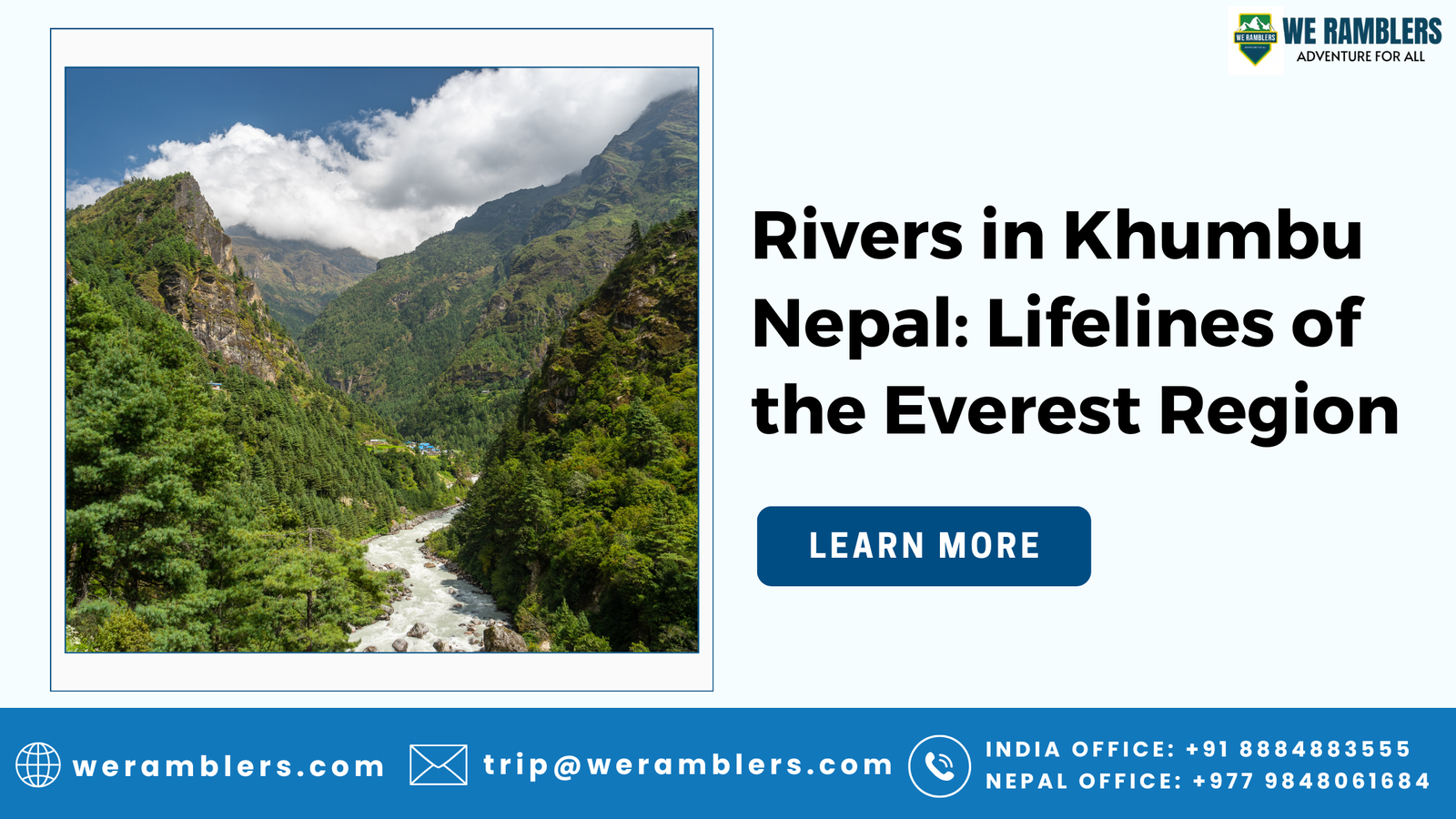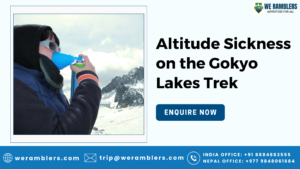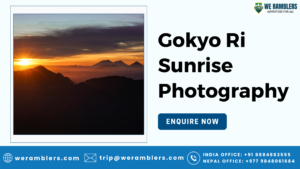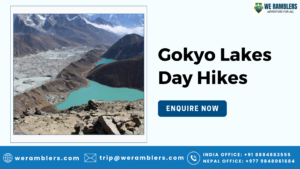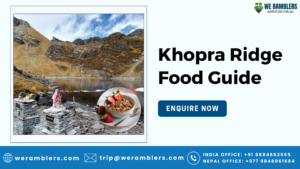The Khumbu region of Nepal, nestled in the northeastern Himalayas, is world-famous as the gateway to Mount Everest. But beyond its towering peaks and sherpa villages lies a lesser-sung hero, its network of glacial-fed rivers. These rivers in Khumbu Nepal are more than water sources; they are the lifelines of this high-altitude landscape, carving valleys, sustaining ecosystems, shaping trekking routes, and nourishing ancient cultures.
From the roaring Dudh Koshi River to the spiritual Imja Khola, these rivers define the geography, challenge the trekkers, and add soul to every Himalayan adventure. If you’re trekking through Khumbu, you’re not just climbing mountains; you’re walking beside history, power, and life.
The Origin of Khumbu’s Rivers: Glaciers and Geography
The rivers in Khumbu Nepal originate high in the Himalayas from glacial meltwater, formed by centuries-old ice masses such as the Khumbu Glacier, Imja Glacier, and others near Lhotse, Ama Dablam, and Island Peak. These rivers are part of the larger Himalayan river system, which includes tributaries that eventually feed into the Ganges Basin.
At altitudes exceeding 5,000 meters, snowmelt and seasonal temperature shifts drive the flow of water. During spring and summer, increased glacier melt swells river volumes, while in winter, water flow diminishes drastically. This hydrological cycle affects not just ecology but also trekking conditions, bridge safety, and village water supply.
The rivers here cut through deep valleys, creating the dramatic geography that makes treks in the Khumbu region so visually stunning. From roaring waterfalls to silent glacier-fed creeks, these rivers shape the very land that you walk on.
Major Rivers in the Khumbu Region
Dudh Koshi River
Arguably the most famous of all Khumbu region rivers, the Dudh Koshi River translates to “Milk River”, named for its milky-white color caused by glacial silt. It originates near Gokyo Lakes and Ngozumpa Glacier, weaving its way through Lukla, Phakding, and the bustling Namche Bazaar.
Trekkers cross this river multiple times via iconic suspension bridges, including the famous Hillary Suspension Bridge. The river’s flow adds both soundscapes and aesthetic drama to the Everest Base Camp Trek, offering trekkers a continual reminder of the region’s raw power and beauty.
The Dudh Koshi is not only a visual spectacle but also a hydrological powerhouse, merging with the Sun Koshi River further downstream to contribute to Nepal’s overall water resources.
Bhote Koshi River
Flowing down from the Tibet-Nepal border, the Bhote Koshi River is one of the fastest-flowing rivers in the country. Though its upper course lies just outside the main Khumbu trekking region, it merges with the Dudh Koshi near Phakding, making it part of the greater Everest river network.
What makes Bhote Koshi notable is its intensity — narrow gorges, steep gradients, and violent currents make it a top location for white-water rafting (primarily in lower elevations near Barhabise). In Khumbu, however, it lends drama to the trekking landscape, cutting deep into valleys and creating photo-worthy drops and twists.
This river is a physical embodiment of the Himalayan energy, and even if you don’t trek directly beside it, its presence echoes through the Khumbu.
Imja Khola
Flowing from the pristine Imja Glacier, just below Island Peak (Imja Tse), the Imja Khola is a sacred and scenic river that flows through Dingboche, Pangboche, and merges with the Dudh Koshi near Tengboche. It’s an essential feature of both the Everest Base Camp trek and the route to Ama Dablam Base Camp.
This river runs along trails where trekkers experience breathtaking views of Lhotse, Ama Dablam, and the Imja Valley. Several suspension bridges span the Imja Khola, and many trekkers pause here to take in the reflective power of the flowing water against snow-capped backdrops.
The Imja Khola symbolizes the intertwining of nature and spirituality, often flowing near chortens and mani walls, reminding trekkers of the spiritual depth of the region.
Cultural and Spiritual Significance of the Rivers in Khumbu Nepal
In the Khumbu region, rivers are not just geological phenomena; they are spiritually revered by the Sherpa people. Flowing from sacred mountains, these rivers are believed to be the manifestations of Himalayan deities.
You’ll find countless mani stones (engraved with Buddhist mantras), prayer flags, and chortens lining the riverbanks. Monasteries like Tengboche Gompa, perched near river confluences, are chosen not by chance but for spiritual harmony with these water bodies.
Festivals like Dumje, held near rivers, involve blessings, prayers, and rituals to thank nature for its gifts. Trekkers crossing bridges and walking beside rivers often find themselves drawn into the serenity and sacredness of the moment.
Trekking Along the Rivers of Khumbu
Many of the famous trekking routes in the Khumbu follow or intersect these rivers, making them your natural companion throughout your Himalayan adventure.
The Everest Base Camp Trek runs along the Dudh Koshi River from Lukla to Namche, and then along Imja Khola as you ascend through Dingboche and Lobuche. Similarly, the Three Passes Trek features multiple river crossings and glacial streams.
These rivers are not just guides; they’re also navigational anchors, sources of water, and places for rest. Trekkers often camp or lunch near rivers, enjoying the views, sounds, and sometimes even a cold splash to cool tired feet.
Note: As per the trekking regulations enforced in 2023, solo trekking is strictly prohibited in all national parks of Nepal. You must be accompanied by a certified guide to explore any trekking region, including Khumbu. At We Ramblers, we ensure that all expeditions are led by licensed, professional guides for your safety, compliance, and local immersion.

Environmental Concerns and Climate Impact on the Rivers in Khumbu Nepal
Like much of the Himalayas, the rivers in Khumbu Nepal are under serious threat from climate change. Rising temperatures are causing rapid glacier melt, leading to:
- Shrinking water sources in dry seasons
- Overflowing rivers in monsoons
- Formation of dangerous glacial lakes prone to GLOFs (Glacial Lake Outburst Floods)
The Khumbu Glacier itself is retreating at an alarming rate. This affects not just river flow, but also drinking water supply, bridge safety, and the overall trekking experience.
At We Ramblers, we advocate for eco-conscious trekking and sustainable tourism practices, ensuring minimal environmental impact on these sacred waterways.
We Ramblers — Your Adventure Partner in Nepal
We Ramblers is a leading adventure travel company, specializing in curated trekking experiences across the Himalayas. From iconic routes like the Everest Base Camp Trek to offbeat gems like the Khopra Ridge Trek, we help you experience Nepal like never before.
We prioritize:
- Certified, experienced guides (as required by Nepal’s trekking laws)
- Safety-first itineraries
- Sustainable and culturally respectful travel
- Customized treks for solo travelers, couples, and groups
With glowing reviews and a passion for exploration, we are your trusted companion in the mountains. Contact us now for any inquiries.
Frequently Asked Questions (FAQs) About Rivers in Khumbu Nepal
Q1: Which is the main river in the Khumbu region?
A: The Dudh Koshi River is the main river flowing through the Everest trekking route, including Lukla, Phakding, and Namche Bazaar.
Q2: Are there glaciers that feed the rivers in Khumbu?
A: Yes. Glaciers like the Khumbu Glacier, Imja Glacier, and Ngozumpa Glacier feed most of the rivers in the region, including Imja Khola and Dudh Koshi.
Q3: Can I trek alone along the rivers in Khumbu?
A: No. As per Nepal’s 2023 law, all trekkers must be accompanied by a certified guide. Solo trekking is not allowed in any national park areas.
Q4: Do rivers affect trekking routes in the Khumbu?
A: Absolutely. Rivers define the route layout, influence bridge construction, and offer natural rest points during long treks.

